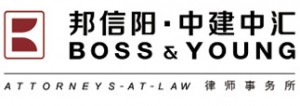In the capital-intensive real estate industry, developers that need liquidity have relied heavily on funding backed by their properties. When their liquidity demand cannot be met with this conventional financing approach, domestic developers and investors set eyes on secondary financing backed by existing properties, especially commercial properties, believing this new approach would prove a blue ocean for funding. Starting with the history and substantial features of real estate financing, we look into the prospect of real estate securitization in China, with real estate investment trusts (REITs) as an example.

Partner
Boss & Young
CONVENTIONAL APPROACH
- In view of the heavy tax burden in connection with transfers of real estate to and from developers, few developers that seek real estate financing would choose to transfer title to their real estate. Instead, many of them prefer equity financing, which involves indirect transfer of ownership, or usufruct, of real estate through assignment of the equity in subsidiaries (companies set up for running projects), while authentic assignment of equity is seldom seen because developers and investors usually reach consensus on repurchase. In practice, both the financing approach that combines “claim plus mortgage” and the approach that focuses on usufruct in real estate are implemented in non-open markets, and transactions resulting from both approaches give rise to a debtor-creditor relationship.
As access to bank facilities is restricted, trusts have taken their place as the major source of funding for the real estate industry. This trend entails an increasingly complex structure of trusts that enter into financing transactions, which evolve from the conventional “trust loan plus equity investment trust” model at the beginning, to usufruct investment fund trust at a later stage, and to usufruct property trusts launched most recently.
The current practice of transferring usufruct, represented by usufruct in trusts, marks the highest level of quasi-securitization permitted for asset managers. However, the authors believe that achieving true real estate securitization is the right direction in which China’s property financing should develop. In the section below, we look into the prospect of real estate securitization in China with domestic quasi-REITs as examples.
You must be a
subscribersubscribersubscribersubscriber
to read this content, please
subscribesubscribesubscribesubscribe
today.
For group subscribers, please click here to access.
Interested in group subscription? Please contact us.
你需要登录去解锁本文内容。欢迎注册账号。如果想阅读月刊所有文章,欢迎成为我们的订阅会员成为我们的订阅会员。
Lu Guofei is a partner and Zhang Yingying is an associate at Boss & Young
中国上海市黄浦区中山南路100号
金外滩国际广场12-15楼 邮编:200010
12/F-15/F, 100 Bund Square
100 South Zhongshan Road
Huangpu District, Shanghai 200010, China
电话 Tel: +86 21 23169090
传真 Fax: +86 21 23169000
电子邮箱 E-mail:
luguofei@boss-young.com
zhangyingying@boss-young.com
www.boss-young.com





























